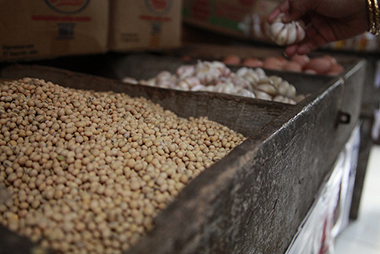Imagine a world in which every box of Cheerios you opened tasted different. In developed countries, quality control measures to ensure that food products meet certain safety and quality standards play a key role in agricultural processing. These measures include testing for bacterial contamination, measuring the amount of fat, protein, and other nutrients, and inspecting plants, livestock, and production facilities.
However, food quality control in agricultural value chains in developing countries, where agricultural production tends to be dominated by smallholder farmers, presents particular challenges. Although formal contracting between farmers and agricultural processors is becoming a norm in some developing countries, many smallholders continue to market their products through informal channels. In such cases, a processor who buys products from a smallholder may be the first actor in the value chain to engage in effective quality control. How can agricultural processors better convince their customers that appropriate steps to ensure high quality products are being taken? Should the food processor use its own staff and facilities to conduct testing and assessments of quality and compliance with safety norms? Or should it rely on a third party to monitor and certify product quality?
In developed countries, food manufacturers use both internal and external quality control. According to a recent survey of U.S. food plants, 48 percent of plants both conducted internal testing and outsourced testing to contract laboratories, 30 percent used solely internal testing, 18 percent used solely outside laboratories, and 4 percent did neither. There is also some evidence that external quality control is becoming more prevalent. For example, the share of U.S. food plants that relied on independent laboratories for Salmonella testing grew from 37 percent in 2001 to 63 percent in 2013. This dichotomy raises the questions of when and why external certification is necessary for business success and the efficient functioning of markets for food products in both developed and developing economies.
Quality control can be divided into two key steps: acquiring information about product quality and acting on this information by preventing defective products from reaching consumers. Because food products have many experience and credence characteristics (experience characteristics being those about which consumers learn from their own consumption experience and credence characteristics being those which consumers can only learn from third parties), consumers may have potentially two (related) concerns when purchasing food. The first is whether the agricultural firm invests in monitoring to determine if its food product meets quality standards. The second is whether the firm appropriately reacts to this information.
In a working paper titled “The Value of Delegated Quality Control”, I develop an analytical model to analyze how firms choose the optimal mode of quality control: whether to control quality internally or to rely on external certification. Even if the monitoring technology is the same in both monitoring regimes, incentives to engage in appropriate quality control are not the same for internal and external monitors. Under internal quality control, the firm incurs two types of costs: (i) the direct cost when it invests in learning about quality through testing, audits, and inspection; and (ii) the opportunity cost when it keeps defective products from being released into the market. On the other hand, a third party monitor incurs only the direct cost; however, this external monitor – be it a private entity or a government agency – must also earn a premium to be willing to engage in appropriate quality control. Taking into account the cost of providing incentives to an external monitor, the model predicts that it is more profitable and efficient for large firms to engage in internal quality control, while small firms are better off using external quality control and certification. The model also shows that the modes of communication between the external certifier and the firm and between the external certifier and consumers, as well as potential economies of scale in external certification, are important determinants of the optimal mode of quality control.
In future research, I intend to estimate the model’s parameters that influence the optimal mode of quality control, such as the cost of assessing quality, the profit margin for high quality products, the frequency of trades, the accuracy with which consumers evaluate quality, and the potential size of the market for external certification. Preliminary results from a survey of participants in dairy value chains in Kyrgyzstan suggest that the surveyed milk plants and milk collectors relied on internal quality control with some important exceptions, such as livestock inspections and inspections of production facilities for compliance with sanitary norms. However, an undeveloped market for external certifiers and weak contract enforcement probably significantly limited the organizational choices of the agricultural firms that participated in the survey.







